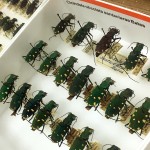Professor Norm Johnson, Director of our C.A. Triplehorn Insect Collection, studies systematics of parasitoid wasps and so do his students. Graduate student Elijah Talamas collected many insect specimens during his PhD work at Ohio State and revised several taxa. Recently he published a photographic catalog of some primary types of parasitoid wasps in the large insect order Hymenoptera.
I contacted Elijah in his current position at the The Florida Department of Agriculture and Consumer Service and asked him to give us some insights into his life as a researcher. He recently published results from work he did as a a postdoctoral fellow for the U.S. Department of Agriculture at the National Museum of Natural History in Washington DC:
 Elijah: “I am the curator of Hymenoptera (bees, ants and wasps) at the Florida State Collection of Arthropods, which is part of the Florida Department of Agriculture and Consumer Services. I have broad interests in the taxonomy, morphology, and evolution of platygastroid wasps, especially groups with potential for biological control. I was trained by Dr. Norman Johnson at The Ohio State University, and maintain active collaboration with him and members of his lab.”
Elijah: “I am the curator of Hymenoptera (bees, ants and wasps) at the Florida State Collection of Arthropods, which is part of the Florida Department of Agriculture and Consumer Services. I have broad interests in the taxonomy, morphology, and evolution of platygastroid wasps, especially groups with potential for biological control. I was trained by Dr. Norman Johnson at The Ohio State University, and maintain active collaboration with him and members of his lab.”
Angelika: “What species did you study?”
Elijah: “As a taxonomist, I study many species and genera in the superfamily Platygastroidea. These are parasitoid wasps that require development in a host to complete their life cycle, i.e. their larvae live as parasites that eventually kill their hosts. The past few years have focused on the genus Trissolcus which are parasitoids of stink bug eggs.”
(Angelika’s note: You may recall that the brown marmorated stink bug is an invasive species from Asia, now found in the eastern half of the U.S., as well as California, Oregon, Washington, Arizona, New Mexico and Texas. You may have seen one in your home, especially in late fall when they are looking for a sheltered place to overwinter)
Angelika: “What was your research questions in this particular study?”
Elijah: “A typical taxonomic project will “revise” a genus and involves many questions: What are the characters that define the genus? How many species does it contain and how do we identify them? The separation of organisms into species is the foundation of organismal biology and this is one of the jobs of a taxonomist.”
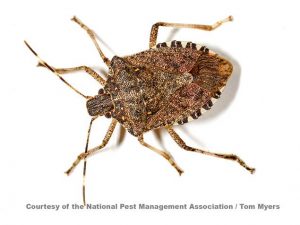 Angelika: “What do we know already, and why is it important to know this?”
Angelika: “What do we know already, and why is it important to know this?”
Elijah: “We know that many parasitoid wasps attack the eggs of agricultural pests. This is important because they are often the best, and sometimes only solution to control numbers. The invasive brown marmorated stink bug is an invasive pest that can be found in Ohio, and it is not controlled by natural enemies in the United States. However, there are parasitoid wasps in its native distribution in Asia that kill the stink bugs’ eggs very efficiently. Biological control research about these wasps requires thorough study of their morphology to ensure that
species are properly identified.”
Angelika: “How did you study this question?”
Elijah: “I study parasitoid wasps by examining them under a microscope, documenting their anatomical structures, and the variability that can occur within a species. This often requires examination of specimens from all over the world, and sometimes international travel is required to access specimens in foreign institutions and to collect fresh material. I rely heavily on photography to document and share information about these wasps, but I also use other techniques, including scanning electron microscopy and analysis of DNA.”
When looking at detailed features one may notice that some of them are different from how they were originally described and the specimen may be more closely related to to another group of specimens. This means that sometimes the classification of the species needs to be revised and renamed to reflect these new relationships. For example, in the figures below you can see the holotype, the specimen that was used to describe the species Psilanteris nigriclavata. This species was originally described with the name Opisthacantha nigiclavatus in 1905. The specimen was embedded in glue, which obscured some of its diagnostic characters and hampered a clear assessment of its identity. As part of this project, Elijah dissolved some of the glue and determined that it shared characteristics with other species in the genus Psilanteris. Thus this species was moved to this genus and now operates under the name Psilanteris nigriclavata.

62 head, mesosoma, metasoma, lateral view; 63 head and mesosoma, anterodorsal view (sk=skaphion); 64 head and mesosoma, lateral view. Scale bars in millimeters.
Angelika: “Why is this research important?”
Elijah: “Taxonomy informs us about many aspects of the biological world. It is the science that reveals the planet’s biological diversity and discovers the evolutionary relationships between organisms. It enables other disciplines to identify organisms for the studies of behavior and ecology, and applications with large scale societal impact, such as biological control of invasive pests.”
Angelika: “What do you hope to have achieved with this study?”
Elijah: “For parasitoid wasps in the superfamily Platygastroidea, this study provides photographs of all holotype specimens in the National Musuem of Natural History and makes them freely available online. Taxonomists all over the world now have immediate access to these specimens through the internet, enabling them to make better informed decisions for classification, and more refined hypotheses about evolution.”
Let us know if you have any questions, we would like to hear form you!
****************************************
Some explanations you may find helpful:
Anterodorsal means in front and toward the back.
A holotype is a single type specimen upon which the description and name of a new species is based.
Lateral means from the side.
The body of arthropods is composed of three parts, from front to back, the prosoma, mesosoma, metasoma.
A parasitoid is an insect whose larvae live as parasites that eventually kill their hosts.
Superfamily is an intermediate classification rank directly above family and might contain one or more related families. For example, Muroidea, a superfamily of rodents, contains six families of rats, mice, hamsters and gerbils. Taxonomists use several levels to classify living things. They follow the International Code of Zoological Nomenclature which specifically mentions superfamily, family, subfamily, tribe, subtribe, genus, subgenus, species, subspecies.
Reference: Talamas, E. J., Thompson, J., Cutler, A., Schoenberger, S. F., Cuminale, A., Jung, T., … & Alvarez, E. (2017). An online photographic catalog of primary types of Platygastroidea (Hymenoptera) in the National Museum of Natural History, Smithsonian Institution. Journal of Hymenoptera Research, 56, 187.
 About the Author: Angelika Nelson is the curator of the Borror Laboratory of Bioacoustics and the Outreach and social media manager for the museum. Here she interviewed Elijah Talamas, currently Postdoctoral researcher with the U.S. Department of Agriculture at the National Museum of Natural History, Smithsonian Institution in Washington DC.
About the Author: Angelika Nelson is the curator of the Borror Laboratory of Bioacoustics and the Outreach and social media manager for the museum. Here she interviewed Elijah Talamas, currently Postdoctoral researcher with the U.S. Department of Agriculture at the National Museum of Natural History, Smithsonian Institution in Washington DC.

























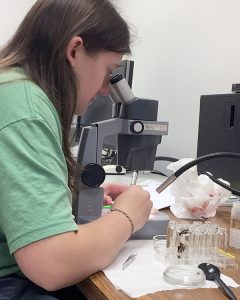

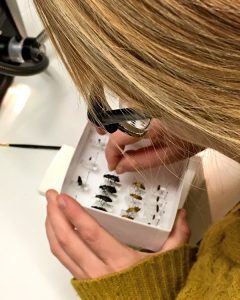

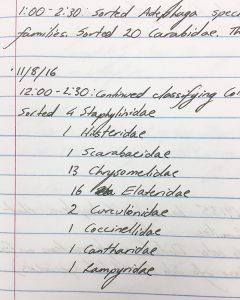

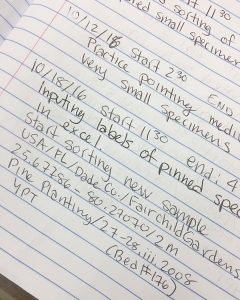
 Last semester we of the Triplehorn Insect Collection offered our first
Last semester we of the Triplehorn Insect Collection offered our first 




























